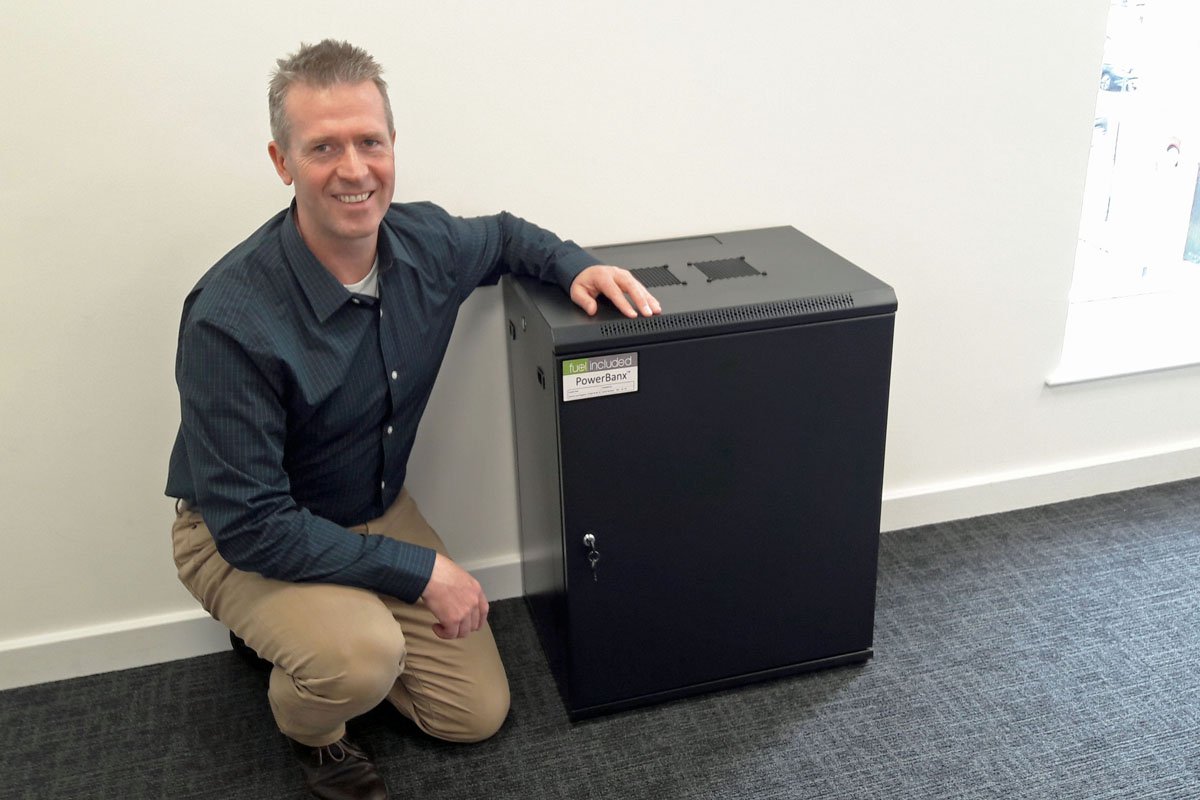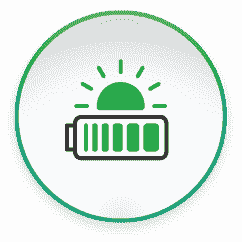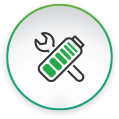This is a quick introduction to how a home battery system works (or at least, more accurately, how does it save you money). It is based on the operation of our PowerBanx home battery, but the basic principles apply to similar systems such as the Tesla PowerWall.

A PowerBanx enclosure (this one contains between 1 and 6 batteries, each of 2.4kWh)
Cheap Electricity
The method of operation of a home battery is straightforward:
- Charge the battery when electricity is cheap
- Discharge the battery to run your home when electricity is expensive
There are, of course, other benefits you get from installing a home battery – primarily having a backup power supply during a power cut – but those are beyond this scope of this discussion and won’t be detailed here.
So, buying cheap electricity to save us from paying for expensive electricity usually comes down to two scenarios:
- Solar Charging: We have solar panels but can’t use all the electricity generated when it’s being produced. This applies to a lot of households in the UK where the family are out during the day when the solar panels are working hard. By the time they come home in the evening the solar panels are turning off, just as they turn on the TV, cooker, shower, etc. Now with a battery it is possible to fill it with solar during the day and run the house in the evening on free electricity.
- Economy 7 Charging: We have access to cheap night-time electricity (usually an Economy 7 tariff). In the past this typically applied to homes using electricity storage heaters but these are now not very popular. Instead Eco 7 is making a comeback as it is a very cheap way to charge an electric car overnight (typically £2 for a charge instead of £4 during the day). Now with a battery it is possible to charge it up during the night and run the home during the day on half-price electricity.
Most home batteries provide for Solar Charging while the better ones also provide for Economy 7 Charging. Our PowerBanx can do both, and while the Tesla PowerWall can currently do Solar Charging. it is also expected to do Economy 7 charging in the future.
With a suitable home battery the ideal scenario, to achieve maximum savings and the shortest payback, is to combine Solar and Economy 7 Charging so that the home is powered with free solar electricity in the summer and half-price electricity in the winter. Further, a sophisticated battery system like the PowerBanx allows for ‘charge blending’, i.e. it can use different proportions of the two types of electricity during the year (e.g. in November it might be 40% solar and 60% Eco 7).
Operating Modes
The PowerBanx has two main modes of use (known as ‘work modes’):
- Auto Mode: The PowerBanx will automatically fully charge and discharge the battery throughout a 24 hour period. It will charge up when it sees that otherwise electricity would leave the house to go into the grid (‘export’) and be lost. It will discharge when it sees that otherwise electricity will be bought into the house from the grid (‘import’) and be paid for. The result is that a minimum of electricity has to be bought from the grid.
- Time-of-use Mode: This works like Auto Mode but with the addition of overrides for particular periods during the year. During these periods the PowerBanx will charge up even when there is no solar electricity available. Instead it will charge at particular times of the day or night when grid electricity is cheapest.
The PowerBanx has two other work modes: Timing Mode (charge and discharge at set times – largely used for testing) and Passive Mode (allows for communication with external systems) but these are beyond the scope of this discussion and won’t be detailed here).
In Time-of-use Mode the PowerBanx can have up to 4 different ‘rules’ to specify non-solar charging. This makes it possible to pre-program quite a sophisticated charging regime, for example:
- In October: charge 40% from Economy 7, the rest from solar
- In November: charge 65% from Economy 7, the rest from solar
- In December and January: charge 80% from Economy 7, the rest from solar
- In February and March: charge 50% from Economy 7, the rest from solar
- During the rest of the year: charge exclusively from solar
The process of inputting these settings into the PowerBanx inverter is the subject of another blog post: Setting Economy 7 Times on your PowerBanx Home Battery Storage System.
Time-Of-Use
To close, we should note that Economy 7 is just a common example in England of a general “Time-of-Use” tariff, defined as:
Time-of-use pricing (TOU pricing): electricity prices are set for a specific time period on an advance or forward basis, typically not changing more often than twice a year. Prices paid for energy consumed during these periods are pre-established and known to consumers in advance, allowing them to vary their usage in response to such prices and manage their energy costs by shifting usage to a lower cost period or reducing their consumption overall (demand response)
In Scotland a more complex TOU with different rates during the peak evening times is quite common and known as Economy 10. In other countries, e.g. USA, these tariffs are simply known as TOU plans.
An interesting development in the UK is the introduction of complex TOU tariffs that more closely match the actual wholesale cost of electricity at different times of the day (one example is Green Energy Tide with four different time bands). These balance very high costs at peak times with very low costs during the night.
The potential benefits of these complex tariffs warrant further investigation when combined with a home battery system as they may provide significant additional cost savings over conventional tariffs. Specifically any home battery system should be configured to match the household usage in such a way that the home only ever uses the cheap electricity from the tariff, while the battery ‘tides’ the house (excuse the pun) over the times when it’s expensive.
Get The Right PowerBanx For Your Home
If you would like to know more about the PowerBanx range of home battery systems, and get a free quote, please complete our online form:




